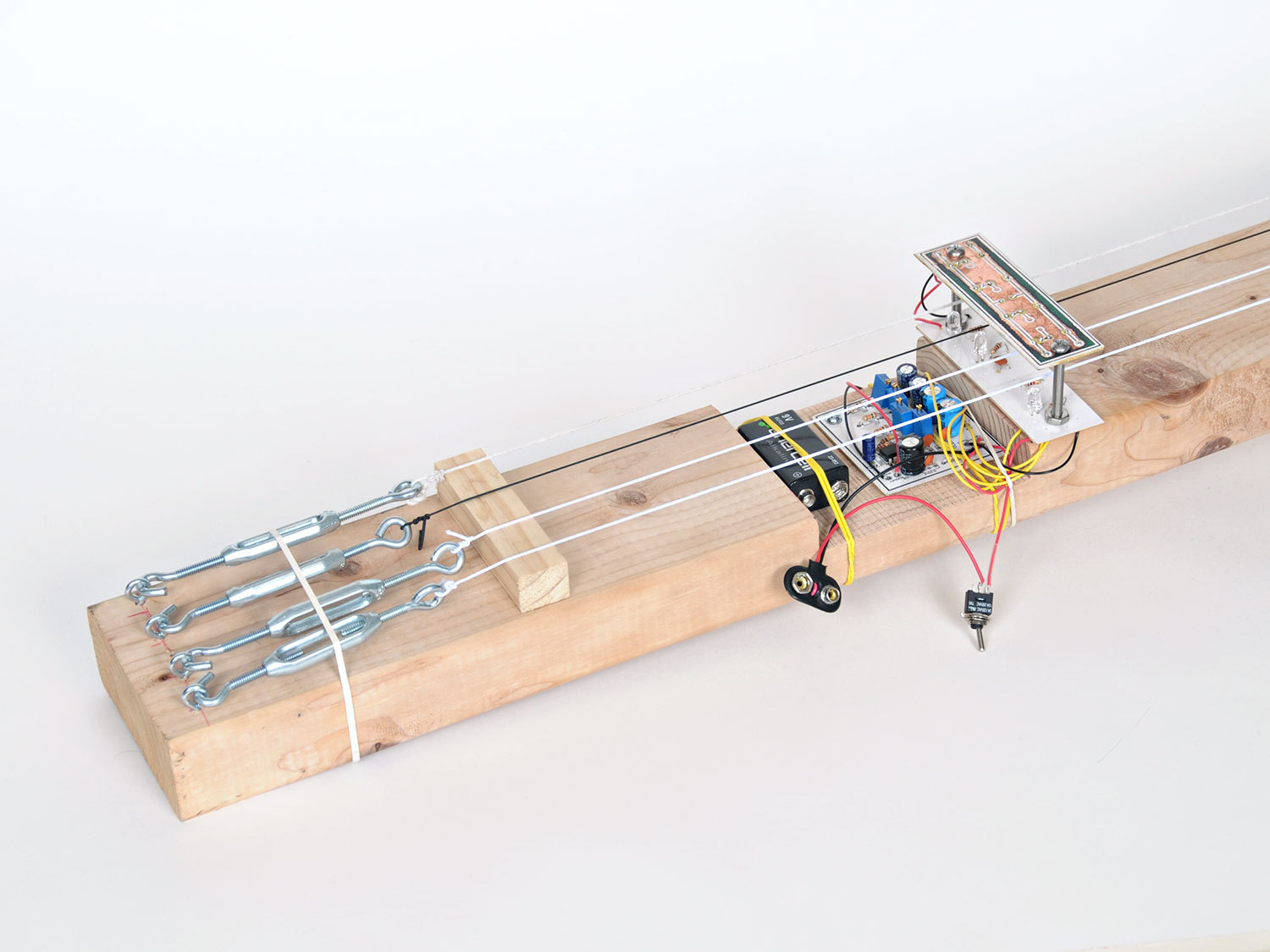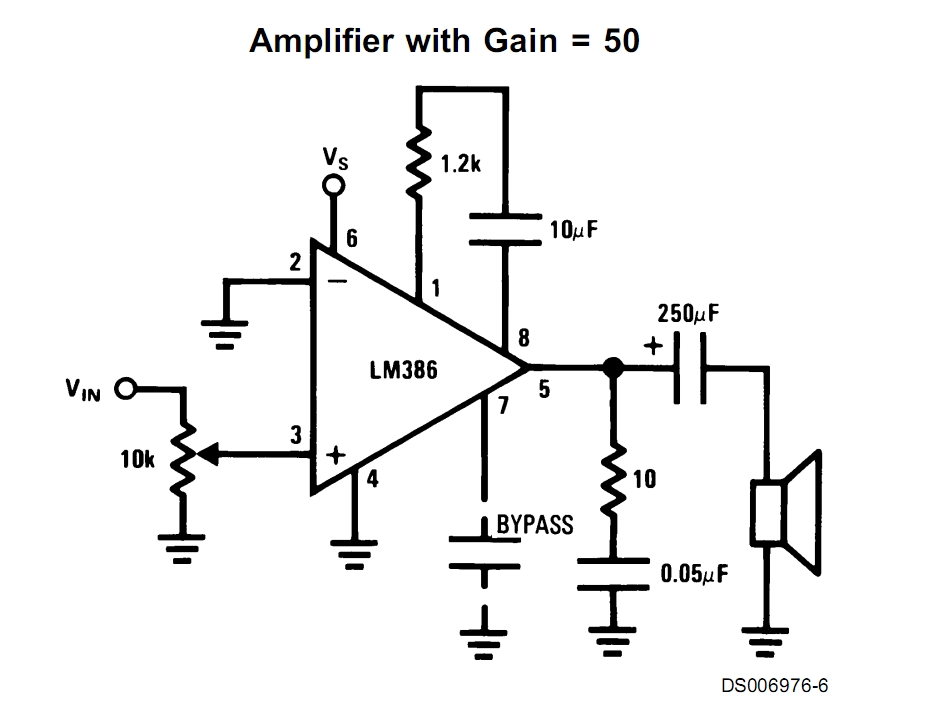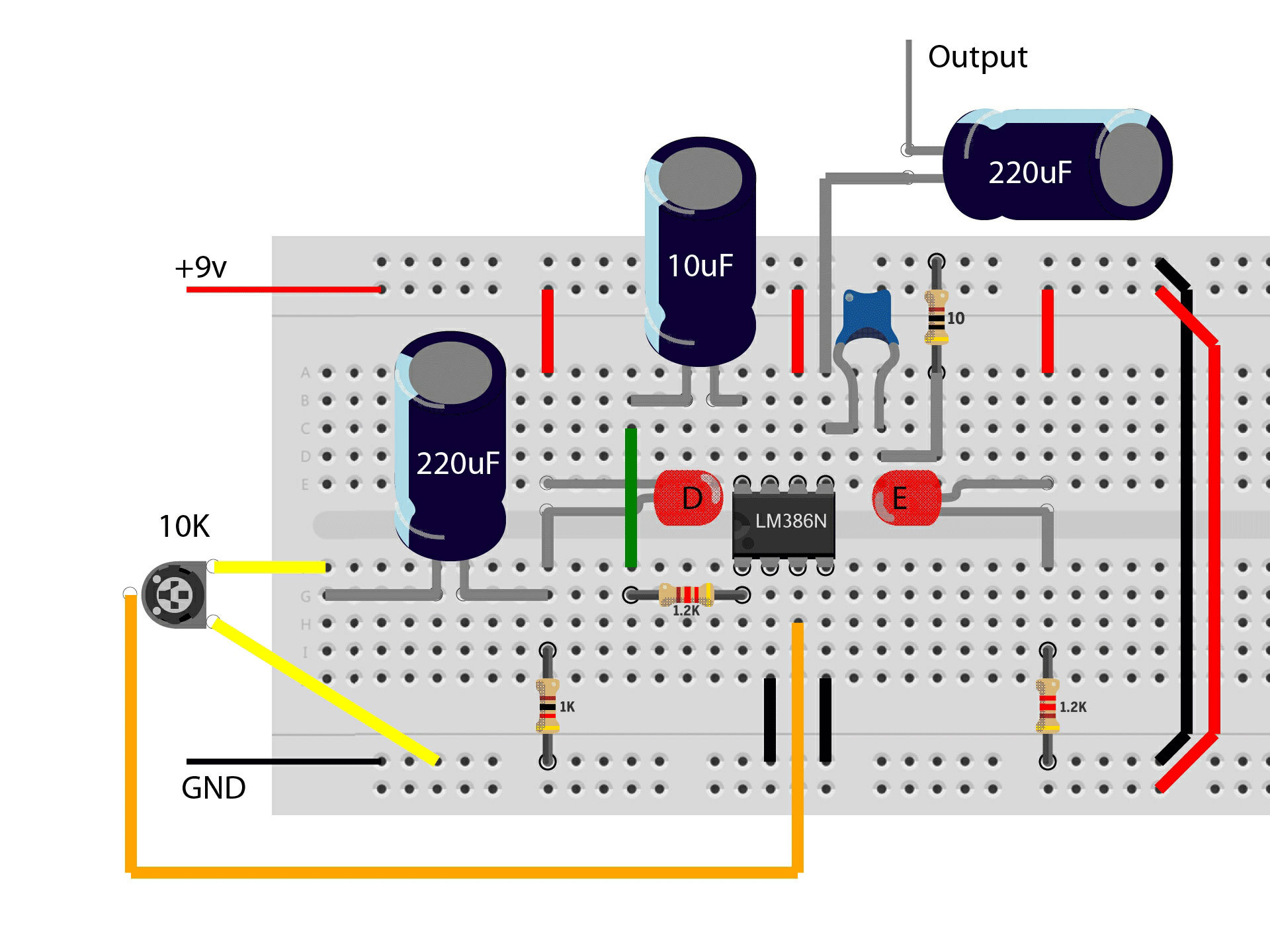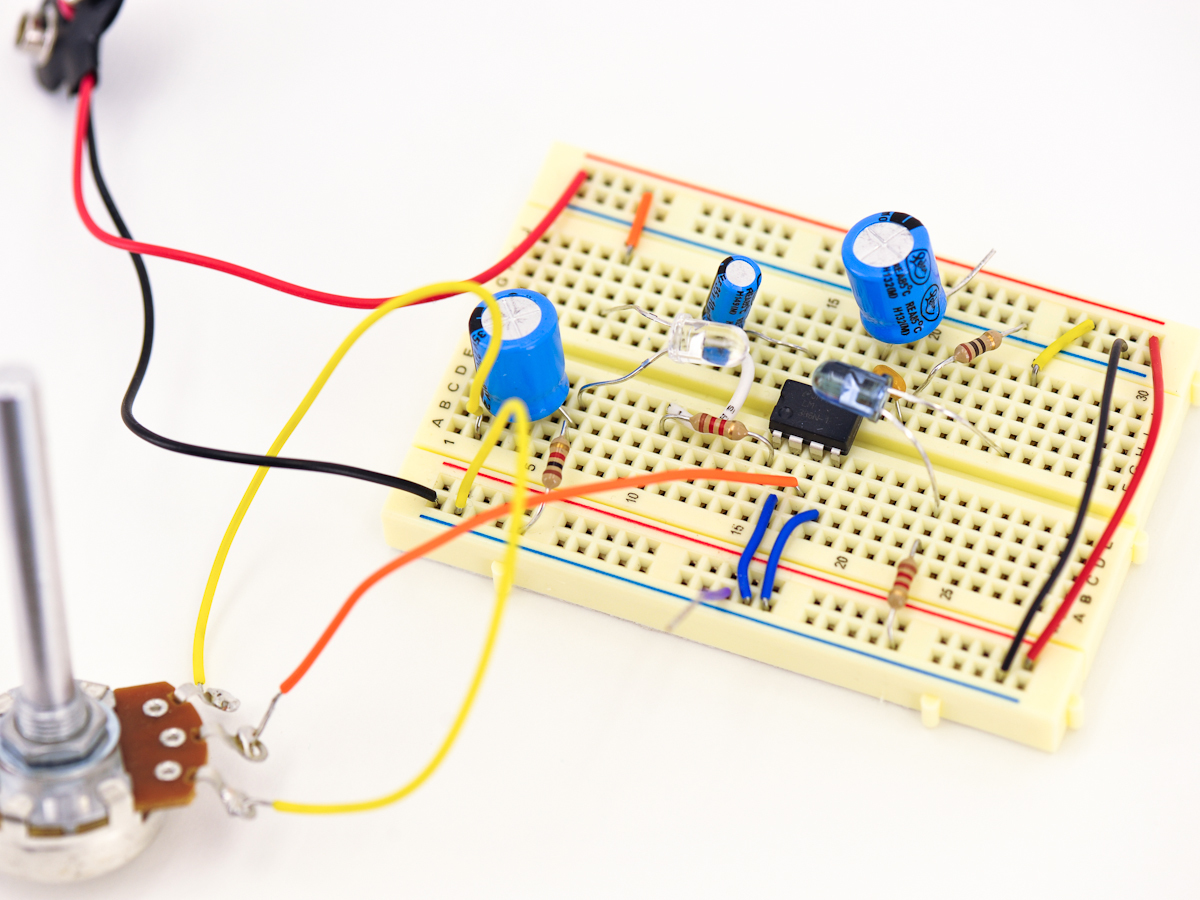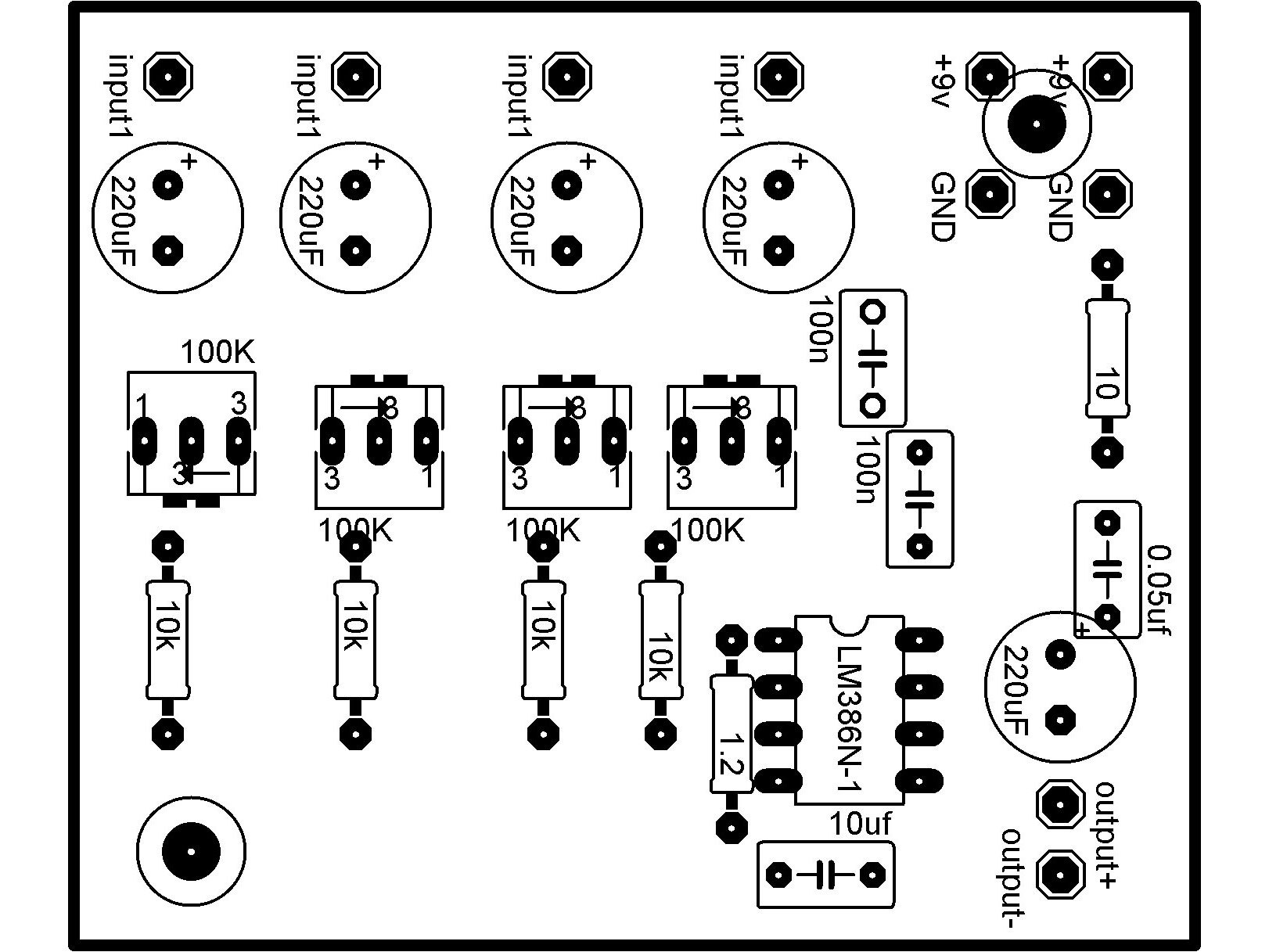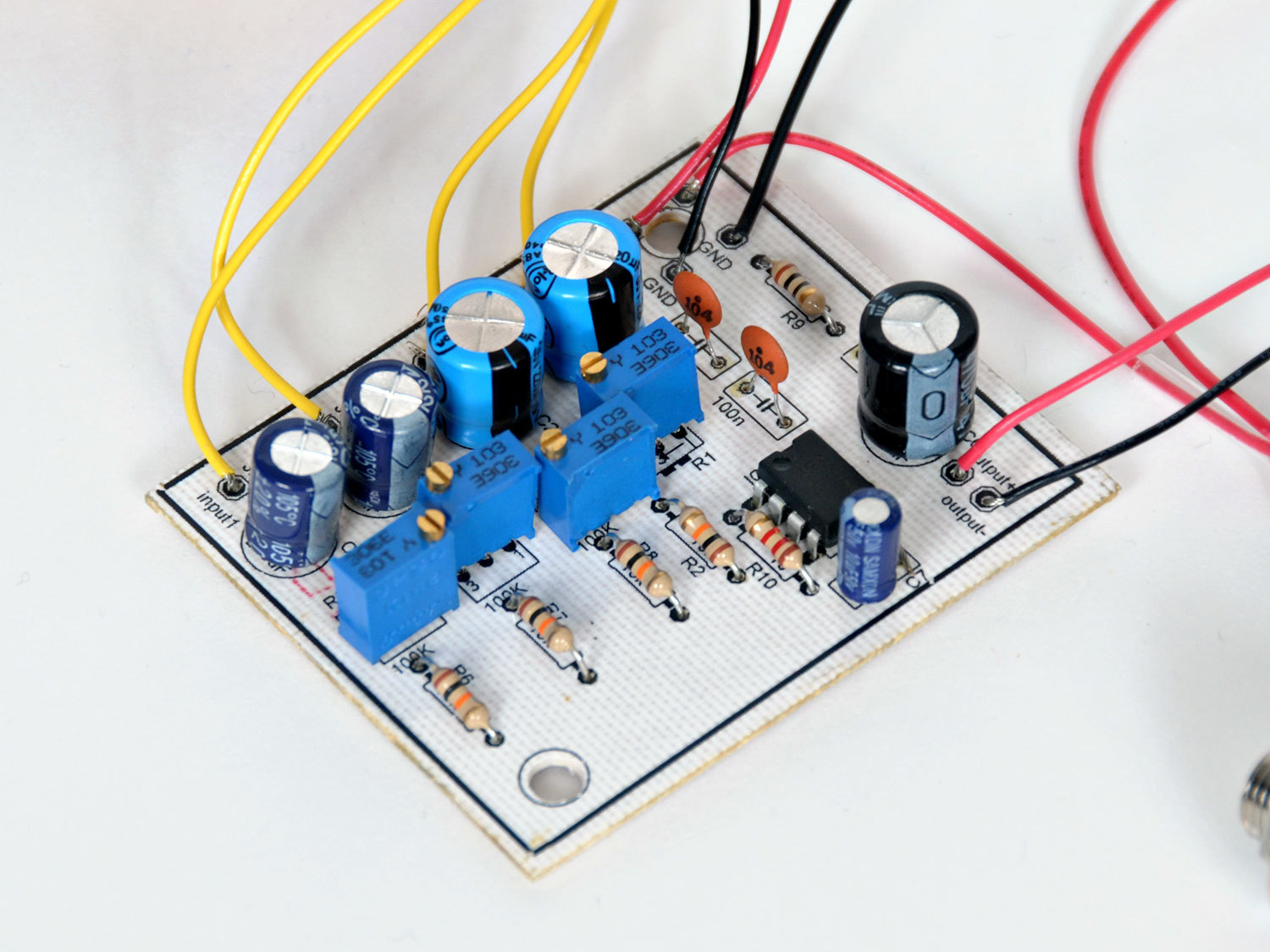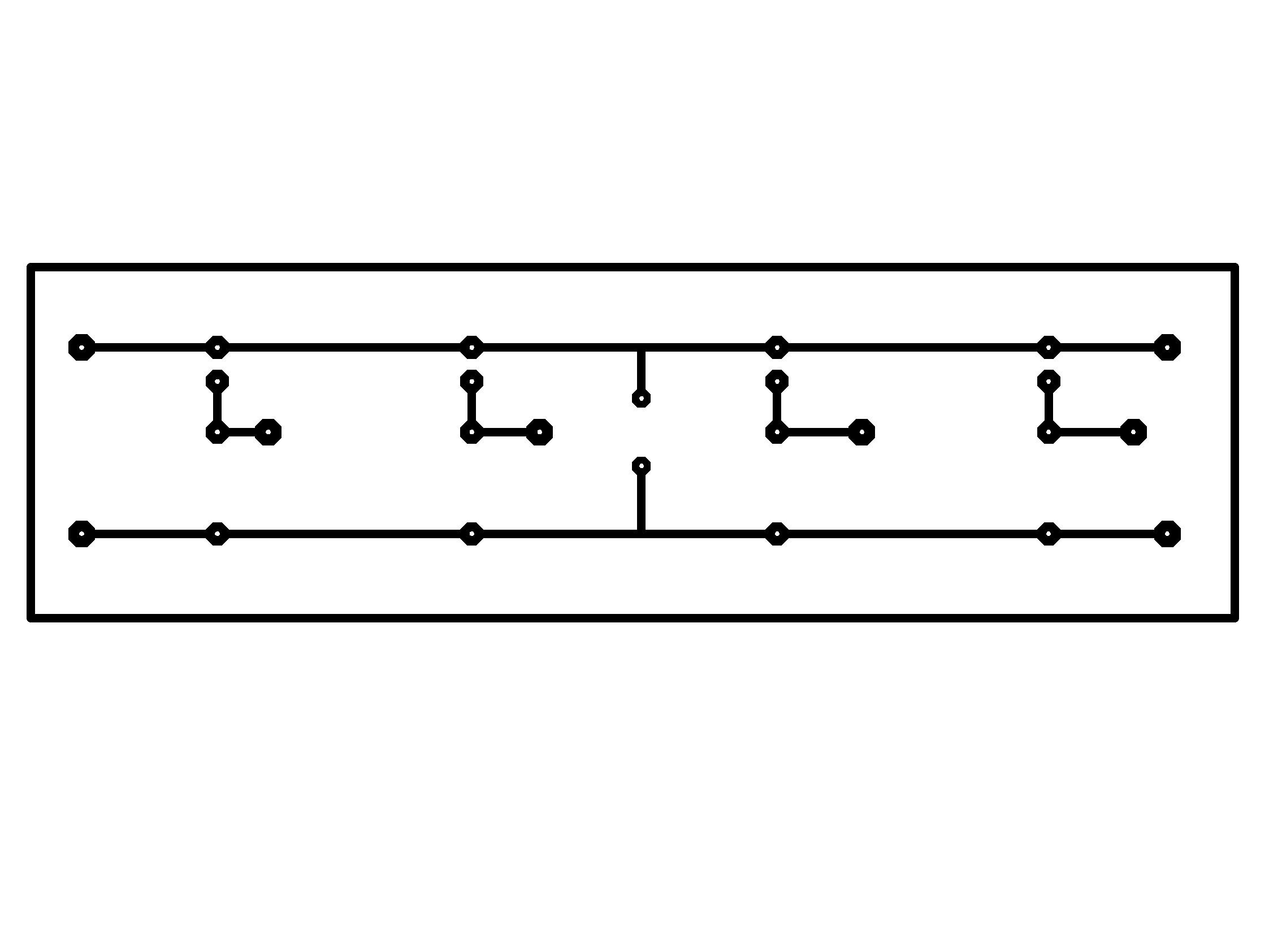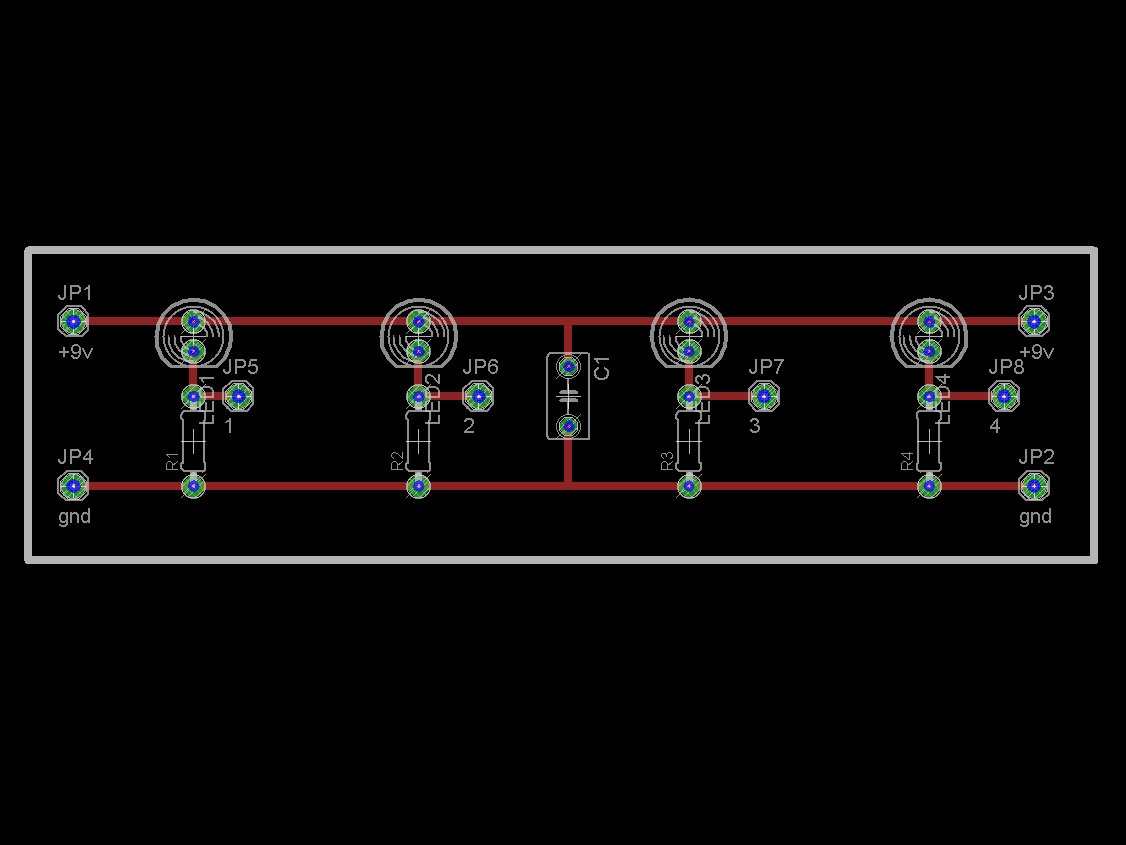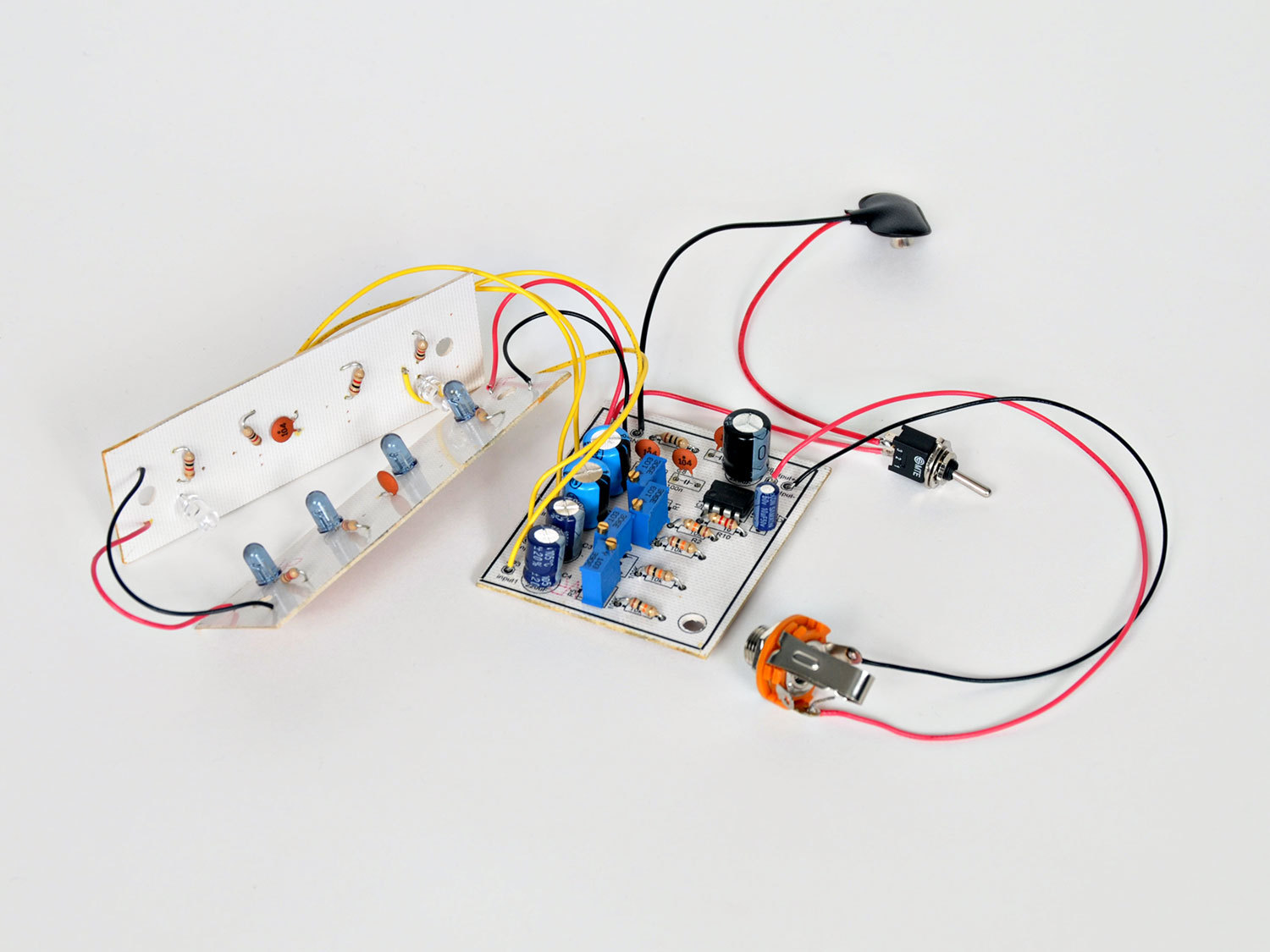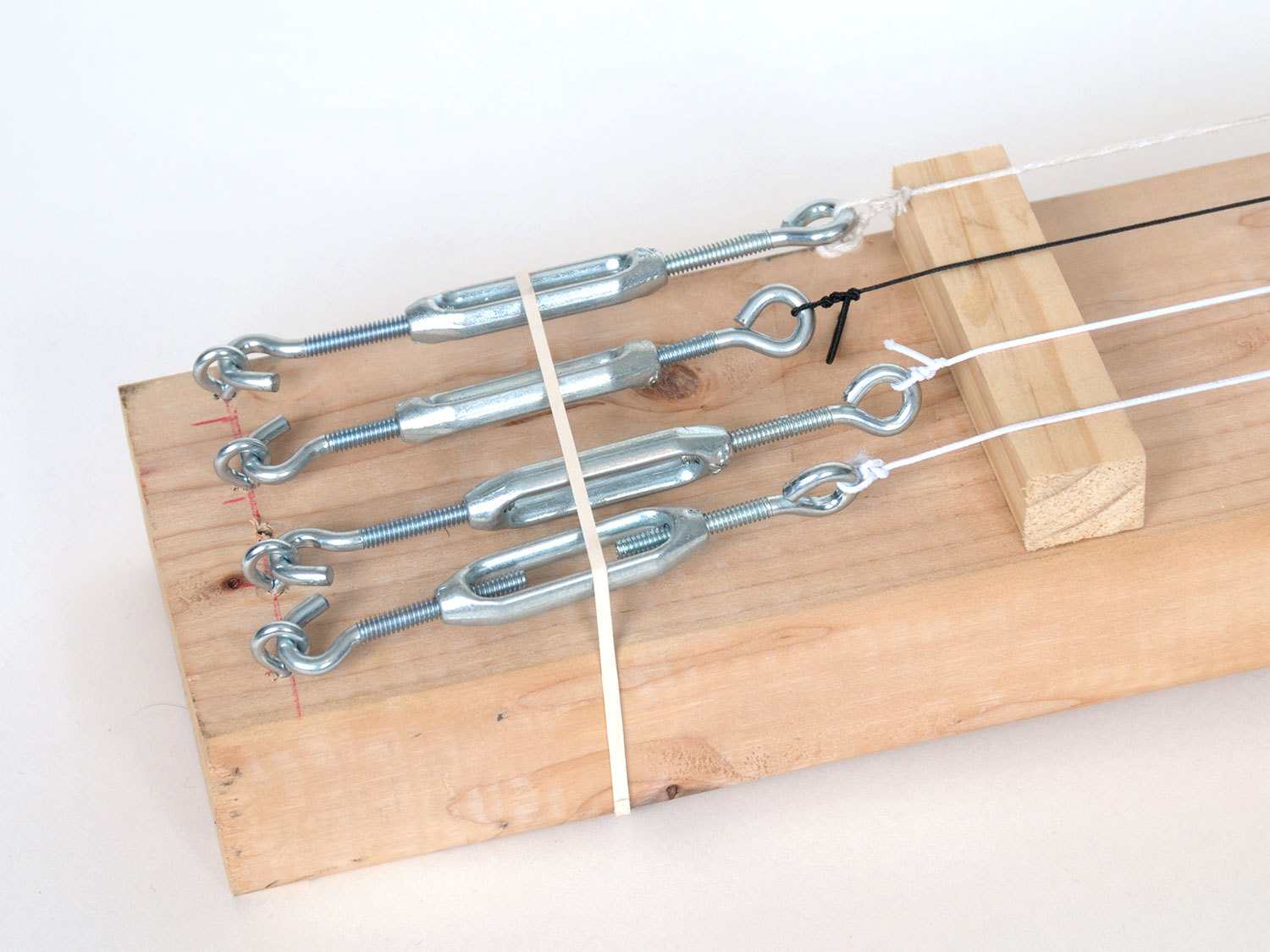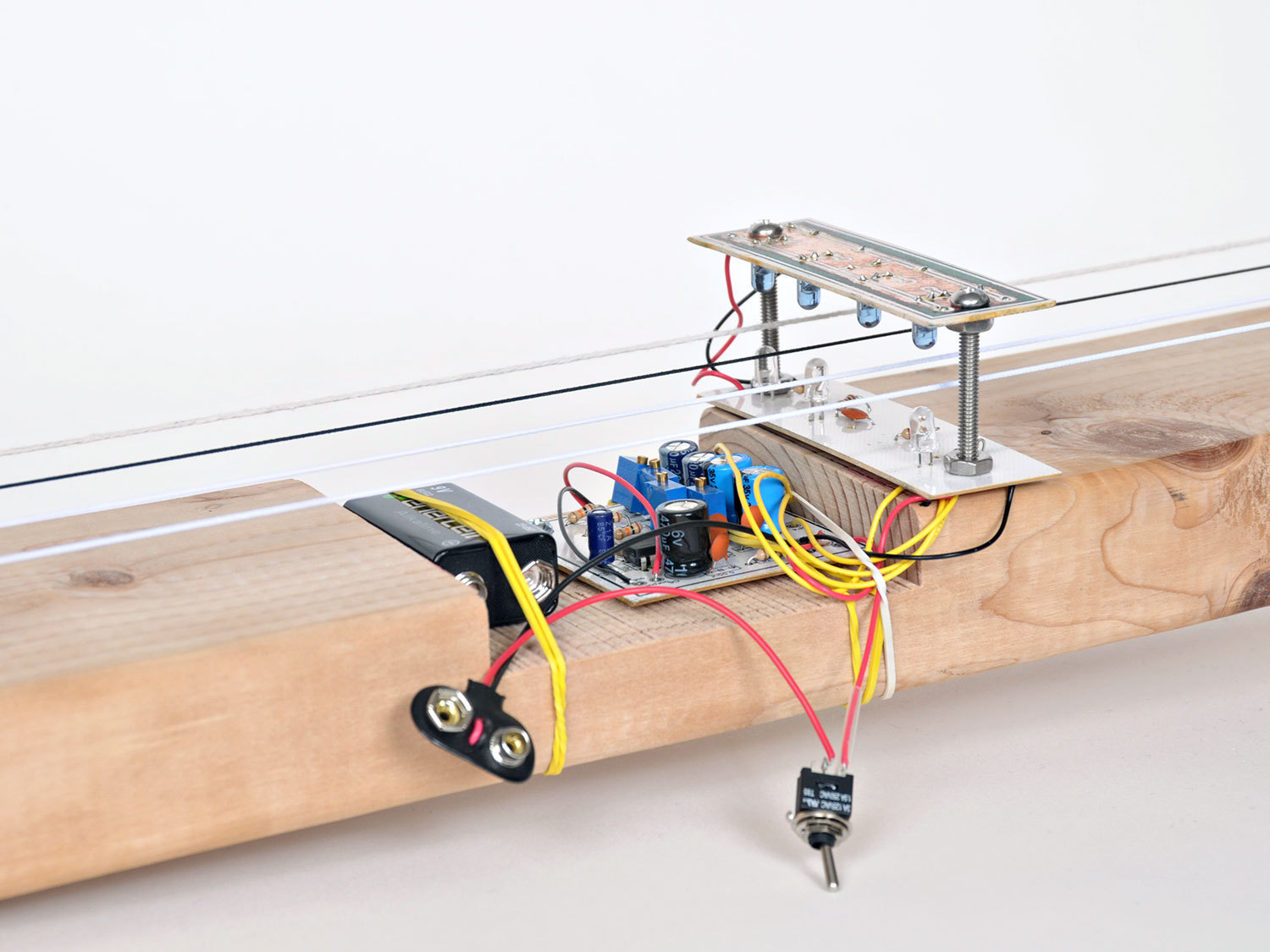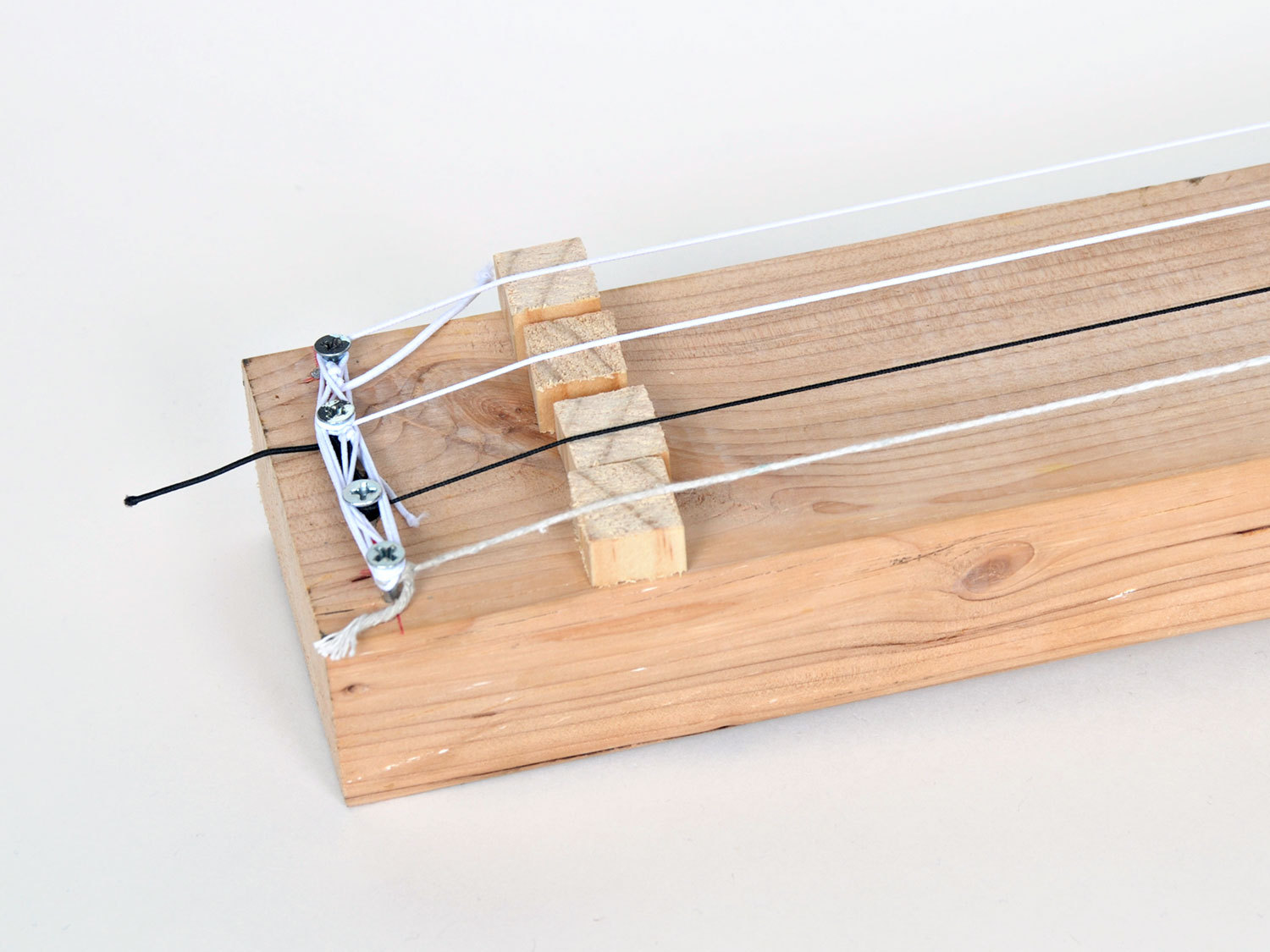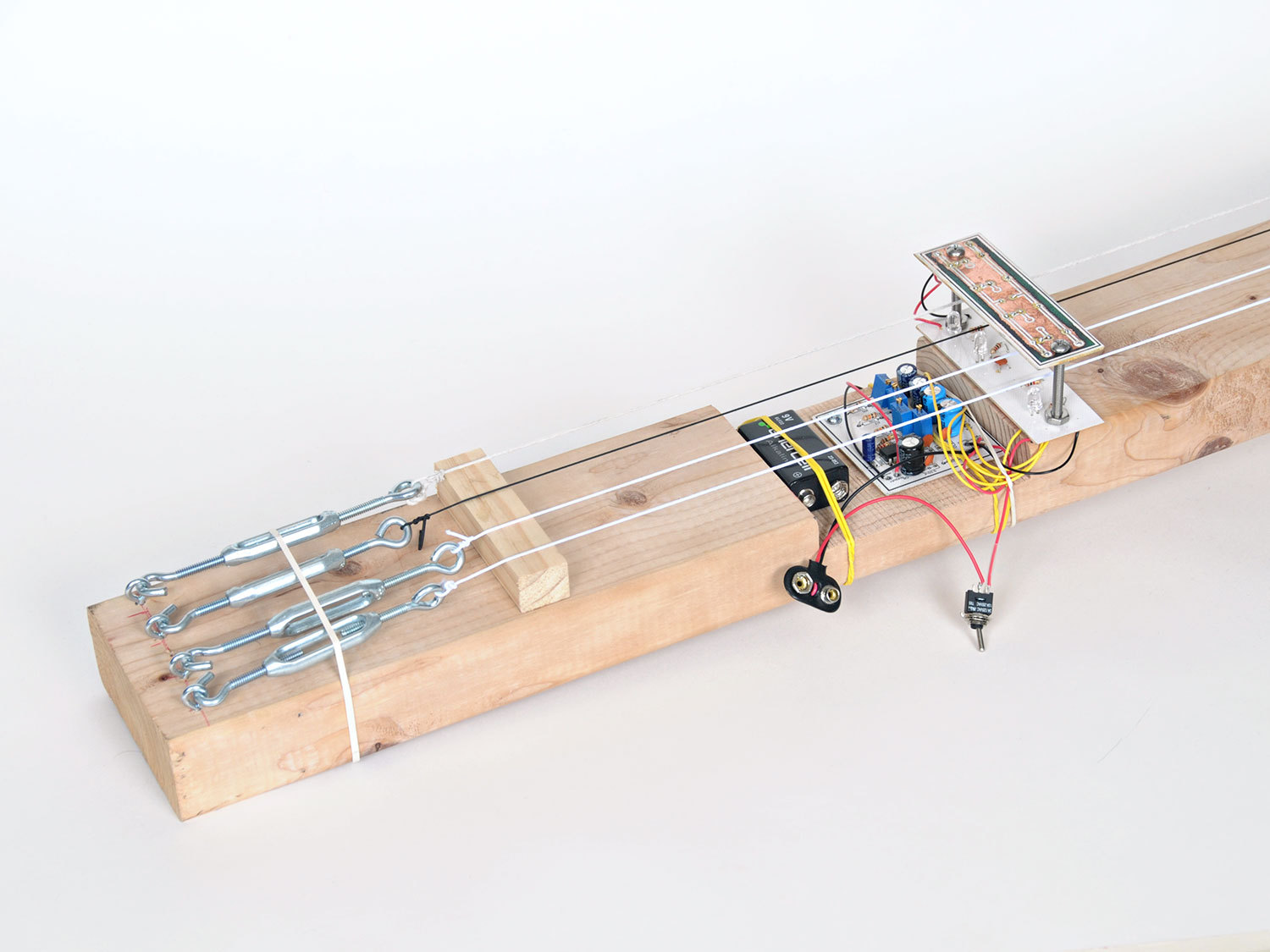
In this project we’re going to take inspiration from Len Keeler’s original Elastic String Bass. We’ll pick it up (no pun intended) and run with it, adding multiple strings for different tonal qualities, etch our own printed circuit board (PCB), and of course, demonstrate the instrument.
First we will breadboard the basic version of this circuit, which will introduce you to the LM386 audio amp, as well as show you how the IR emitter and detector “talk” to each other, turning interrupted infrared (IR) into audio.
Then we’ll etch our own PCBs, including one for the main circuit, and a pair for the LED holders (acting as the guitar’s pickups).
And finally, we will build a wooden body to mount everything on. I’ve used a piece of lumber, but you should feel free to modify the design with the materials you have available. Remember, unlike a traditional guitar, this circuit is sensing interrupted IR, not reverberating through the wooden body of the guitar.



